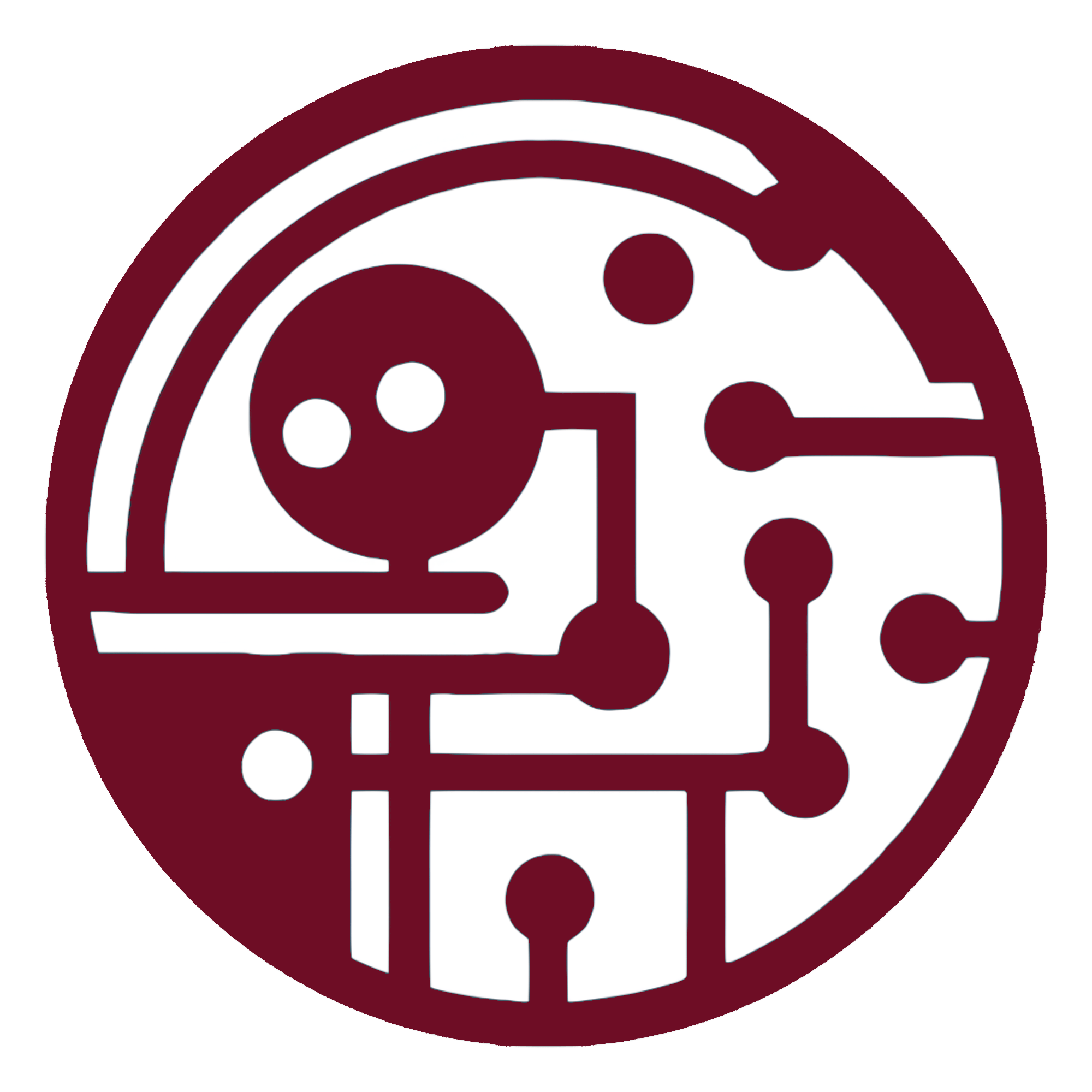21st Century Skills:
How to Prepare Medical Educators for the Future of Teaching
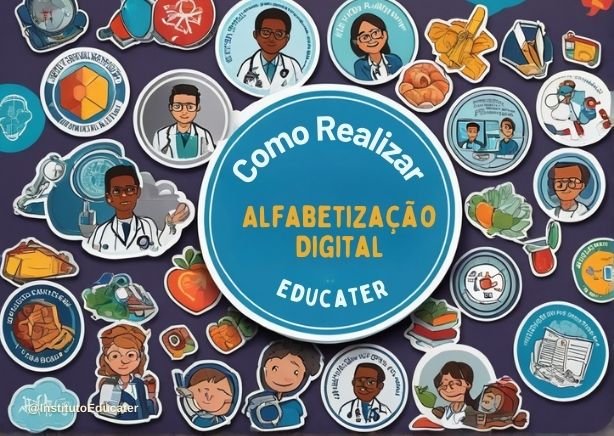
In the age of accelerated information and continuous innovation, preparing medical educators to meet the challenges of the 21st century has become more than a necessity; is an unavoidable requirement. Medical education faces constant challenges in adapting to the demands of the 21st century, and educators must be prepared to overcome these barriers.
In the digital era, medical educators face a series of challenges that require constant evolution in their skills. One of the main ones is the digital literacy, an emerging need that empowers professionals to use advanced technological tools to improve teaching and learning in medicine.
The effective use of technology in medical education is not limited to presenting information, but extends to the creation of more interactive and immersive learning environments, such as virtual reality simulations. These technologies not only complement traditional teaching, but also provide experiences that are impossible in a conventional classroom environment.
Adopting active teaching-learning methodologies is another important aspect in the training of educators. These methodologies place the student at the center of the educational process, promoting more autonomous and critical learning. Techniques such as problem-based learning (PBL) and team-based learning (TBL) are effective examples that have gained ground in medical schools.
To be effective, educators also need to develop interpersonal and communication skills. This not only helps in transmitting knowledge, but also in establishing empathetic relationships with students, facilitating a more welcoming and productive learning environment.
Interdisciplinary collaboration is another central element in 21st century medical education. Integrating different specialties and healthcare professionals into the educational process broadens students' understanding and better prepares them for the collaborative work environment they will encounter in their professional careers.
Adaptability and flexibility are essential skills that educators must model. The field of medicine is constantly evolving, and being able to quickly adapt to new information and technologies is critical to maintaining professional relevance and ensuring quality education.
Finally, it is essential that medical educators adopt a critical and reflective perspective, continually questioning their practices and seeking improvements. This stance not only raises the educational standard, but also inspires future doctors to adopt a similar approach in their clinical practices.
This article is just the beginning of a broader discussion about how 21st century skills can transform medical education. I invite you to continue exploring this topic in the next section, where we will discuss specific strategies for integrating these competencies into the medical curriculum. Stay with us for more information.
Read the article: 21st Century Skills: How to Prepare Medical Educators for the Future of Teaching and see how you can revolutionize medical education! This comprehensive article explores essential competencies for educators who want to not only track but lead change in the healthcare field.
From digital literacy to leadership, learn how to integrate these fundamental skills into your teaching practices. Access now and transform your educational approach to meet the challenges of modern medicine.

Digital Literacy
In the current context, digital literacy is essential. Medical educators must be proficient in the use of digital technologies, as this facilitates not only access to up-to-date medical information, but also the implementation of innovative teaching methods that captivate students.
A digital literacy it is more than a necessary skill; is an essential tool that redefines contemporary medical education. Medical educators must be at the forefront of adopting new technologies, training themselves in the use of digital resources ranging from updated medical databases to e-learning platforms and simulation tools.
It is imperative that educators not only know about these technologies, but also know how to apply them effectively to improve student understanding and engagement. The use of augmented and virtual reality in clinical simulations, for example, can transform theoretical learning into engaging practical experiences, bringing students closer to real clinical scenarios in a safe and controlled way.
Furthermore, proficiency in digital tools allows educators to create more dynamic and interactive content, which can be personalized according to each student's needs. This not only enhances the learning experience, but also prepares students to be more adaptable and technologically adept medical professionals.
Importantly, digital literacy also extends to the ability to critically navigate health information online, an essential skill in an era marked by information overload and often misleading medical information available on the internet.
Effective integration of technology into the medical curriculum is therefore not just about adopting new tools, but also about reshaping the way medical knowledge is transmitted and assimilated. Educators who master these digital skills are better equipped to prepare their students for the challenges of the future of medicine.
However, it is essential that these technological innovations are implemented in a way that complements and enriches already established pedagogical practices, and does not completely replace them. Technology should be seen as an ally of education, not as a unique solution.
In conclusion, digital literacy is a pillar in the training of medical educators in the 21st century. Through it, it is possible not only to expand access and quality of medical education, but also to revolutionize the way future doctors learn and adapt to rapid changes in the world. healthcare sector.
This debate about digital literacy paves the way for the next discussion about the effective use of technology in medical education. Don't miss our next section, where we will explore in depth the technology tools available and how they can be used to maximize student learning and preparation.
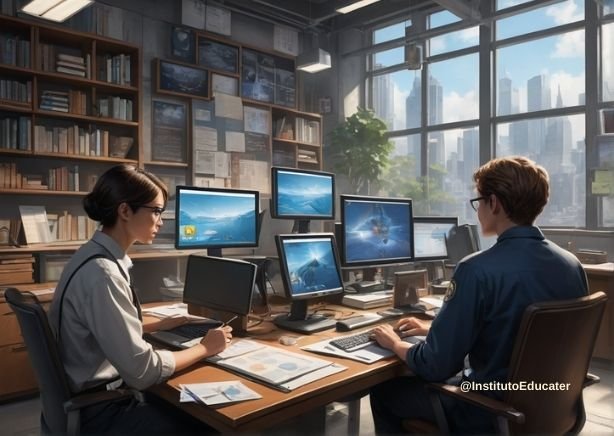
Use of Technology in Teaching
The incorporation of technology in medical education offers a vast field of possibilities, from virtual learning environments, the use of artificial intelligence, telemedicine to the use of augmented reality and virtual reality for clinical simulations.
The incorporation of technology in medical education It is not just a trend, but a fundamental transformation in the way education is delivered and received. The possibilities are vast and range from virtual learning environments to the advanced use of artificial intelligence and telemedicine, revolutionizing both medical theory and practice.
Virtual learning environments, for example, offer a flexible platform where students can access study materials, participate in discussions and take assessments anytime, anywhere. This flexibility is important for accommodating the diverse needs of students and for practicing clinical skills in a controlled and safe context.
The use of artificial intelligence (AI) in medical education is another innovation that is redefining teaching and learning methods. AI algorithms can be used to personalize learning by identifying students' areas of strength and weakness and adapting study material to meet their specific needs more efficiently.
Additionally, telemedicine has been catapulted into the spotlight by the recent global need to access medical care remotely due to the COVID pandemic. Their teaching allows future doctors to become familiar with the technologies and practices needed to provide care remotely, a skill that is increasingly necessary in today's healthcare landscape.
A augmented reality (AR) and virtual reality (VR) are particularly promising for clinical simulations. They offer an innovative way to immerse students in realistic clinical scenarios, allowing them to practice procedures and make clinical decisions in a safe environment without risk to real patients.
Implementing these technologies in medical education not only improves access and quality of education, but also prepares students for a field of work that is increasingly dependent on digital skills and technological innovations.
Therefore, the effective use of technology in medical education is imperative to develop qualified professionals ready to face the challenges of the healthcare sector. This transition to more digital and interactive teaching practices promises not only to improve the educational process, but also to equip doctors with the skills necessary for innovative and effective care.
The discussion about the use of technology in medical education naturally leads us to the next topic: the importance of active teaching-learning methodologies. Continue with us in the next section to explore how these methodologies can be integrated with technology tools to maximize educational effectiveness.
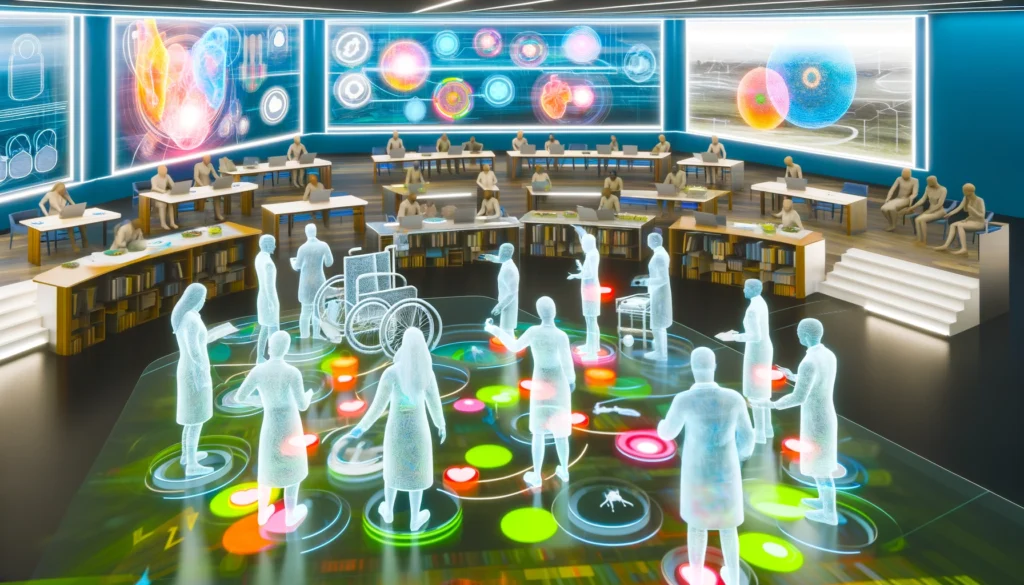
Active methodologies
Teaching Learning
Active teaching-learning methodologies place the student at the center of the educational process, encouraging a proactive stance in the search for knowledge, essential for training doctors who are more prepared for contemporary challenges.
To the active teaching-learning methodologies represent a pedagogical revolution in medical education, centering the educational process on the student and promoting more active participation in their own training. This approach is decisive in preparing doctors capable of facing contemporary challenges with autonomy and competence.
These methodologies, such as Problem-Based Learning (PBL), encourage students to manage complex clinical cases, encouraging the development of critical reasoning and the ability to make evidence-based decisions. This approach not only strengthens theoretical knowledge but also prepares students for clinical practice in dynamic and often uncertain environments.
Team-Based Learning (TBL) is another effective form of active methodology that puts groups of students to work together to solve problems, promoting collaboration and effective communication among future healthcare professionals. This directly reflects the real work environment, where interprofessional collaboration is essential for successful patient care.
Furthermore, the implementation of practical simulations, whether through advanced technology or controlled scenarios, allows students to apply their knowledge in practical situations, reinforcing learning and preparing them for the complexities of the clinical environment.
Also important is the development of self-learning and self-management skills, fundamental for continuing medical education. The ability to learn independently is essential in an era where medical knowledge expands and updates rapidly.
Therefore, by adopting active methodologies, medical education institutions are not only improving the learning process, but are also training professionals who are more prepared, proactive and adaptable to the needs of a constantly evolving healthcare scenario.
The transition to these active methodologies requires a substantial cultural change on the part of both educators and students, requiring investment in training and adequate infrastructure to ensure their effectiveness.
In conclusion, the adoption of active methodologies is more than an educational trend; It is a pressing need to train competent doctors ready for future challenges. The focus must now be on effectively integrating these methodologies into the medical curriculum, ensuring that all students can benefit from a more interactive and engaged education.
This discussion of active teaching-learning methodologies leads us to explore more deeply the interpersonal and communication skills essential for success in the educational and clinical environment. Stay with us in the next section to delve deeper into these critical aspects of medical training.
Interpersonal Skills and Communication
In addition to technical skills, it is important that educators develop communication and empathy skills, which are essential for creating a more effective and humanized learning environment.
In medical training, technical skills are fundamental, but interpersonal and communication skills are equally essential. Medical educators must possess the ability to convey information clearly and efficiently while demonstrating empathy and understanding toward their students, establishing a welcoming and inclusive learning environment.
Effective communication is not just limited to mastering technical language; It also involves the ability to listen actively, respond to students' concerns, and adapt the teaching style to their varied learning needs. This might mean simplifying complex explanations or using visual and practical aids to ensure knowledge is accessible to everyone.
Empathy is another fundamental component of interpersonal relationships in medical education. Educators who demonstrate empathy are able to create a trusting relationship with their students, which is essential for an effective learning environment. Students who feel valued and understood tend to engage more actively in the learning process.
Furthermore, communication and empathy skills are essential for the training of future doctors, as they are essential skills in clinical practice. Doctors with good communication skills are better at diagnosing and treating patients because they can better understand the concerns and symptoms reported by patients.
Therefore, the development of these skills not only improves teaching dynamics, but also prepares students to be more human and responsive professionals. This is central in a field where the ability to interact effectively with patients and colleagues can be as important as medical knowledge itself.
Medical training programs should therefore include specific modules on communication and interpersonal skills, using role-playing, peer feedback, and other techniques to train these essential skills.
In short, by cultivating communication and empathy skills, educators not only enrich the learning process, but also contribute to the training of more qualified doctors who are aware of the human dimensions of medical practice.
The discussion about interpersonal and communication skills leads us directly to the next topic: interdisciplinary collaboration in medicine. Read on to discover how the ability to work together across disciplines is essential to success in the modern medical landscape.
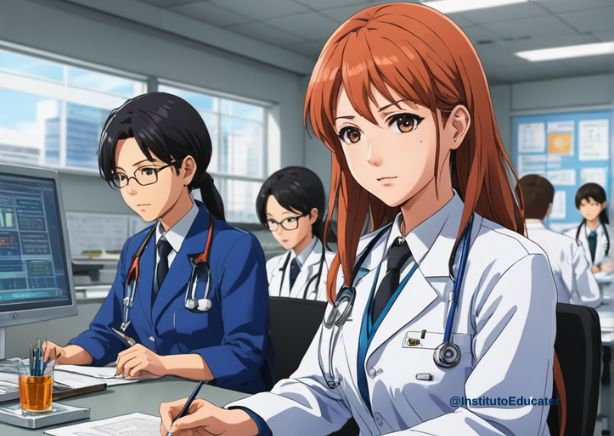
Interdisciplinary Collaboration
Medicine is intrinsically interdisciplinary. Therefore, promoting collaboration between different specialties and professional categories is essential to train doctors capable of offering integrated and comprehensive care, improving patients' health outcomes.
A interdisciplinary collaboration is a central pillar in contemporary medical education, reflecting the complexity and diversity of patient care in today's healthcare landscape. Promoting interaction between different medical specialties and healthcare professionals is essential to train doctors capable of offering integrated and efficient care.
This type of collaboration involves integrating knowledge from multiple disciplines, allowing future physicians to better understand how different areas interact and contribute to holistic patient care. Interdisciplinarity not only enriches the learning process, but also simulates the real work environment, where doctors, nurses, therapists and other healthcare professionals collaborate continuously.
Implementing teaching practices that foster interdisciplinary collaboration can include activities such as joint case studies, collaborative research projects, and clinical simulations involving multiple areas. These activities not only develop clinical skills, but also teach students to communicate effectively and respect perspectives from other disciplines.
Furthermore, interdisciplinary collaboration is fundamental to innovation in healthcare. Professionals from different areas can bring unique knowledge that leads to new solutions to complex problems, improving patient health outcomes and increasing the effectiveness of treatments.
The formation of professional support networks during medical education is also an important benefit of interdisciplinary collaboration. These networks can provide ongoing support throughout physicians' careers, as well as opportunities for ongoing professional development and mutual learning.
Therefore, cultivating an environment that values and promotes interdisciplinary collaboration is essential for the training of a complete health professional prepared for the challenges of contemporary medicine. Such practices not only improve patient care, but also strengthen the healthcare system as a whole.
In summary, interdisciplinary collaboration in medical education prepares students for a career in which the ability to work as a team and mutual understanding between different specialties are indispensable for professional success and the provision of high-quality care.
The importance of interdisciplinary collaboration leads us to the next discussion about adaptability and flexibility, qualities necessary to deal with the constant evolution of medicine. Read on to understand how these skills are fundamental to ongoing professional development.
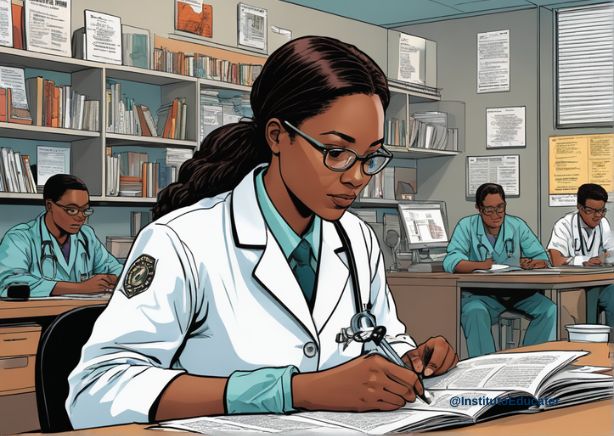
Adaptability and Flexibility
The ability to quickly adapt to new situations and changes in the healthcare environment is essential. Educators who model this flexibility inspire their students to be equally adaptable, a valuable attribute in the dynamic field of medicine.
A adaptability and flexibility These are indispensable qualities in the field of medicine, where conditions and technologies are constantly evolving. For medical educators, modeling this flexibility not only prepares students for the changing realities of medical practice but also inspires them to embrace change as opportunities for growth and learning.
Educators who demonstrate adaptability show their students that it is possible to adjust approaches and methods in the face of new challenges and information. This is important in a field like medicine, where new discoveries and technologies can quickly transform best practices.
Additionally, the ability to be flexible and adaptable helps doctors better deal with the uncertainties and pressures of the healthcare environment. These qualities allow professionals to remain calm and efficient in high-pressure situations, such as medical emergencies or disease outbreaks.
In medical education, fostering an environment that values adaptability may involve encouraging experimentation with new teaching techniques, adopting emerging technologies, or continually reviewing the curriculum to ensure it reflects the latest evidence-based practices.
Training adaptable doctors also involves encouraging a mentality of continuous learning. In a profession where learning never stops, being adaptable means always being open to new knowledge and innovative ways of applying that knowledge in clinical practice.
Ultimately, adaptability and flexibility are more than just skills; These are foundations that support resilience and the capacity for innovation in patient care. Educators who cultivate these qualities in their students are contributing to a new generation of physicians who will be able to lead and transform the field of healthcare.
In conclusion, adaptability and flexibility are essential to medical education, preparing students to be professionals who not only respond to change, but who also proactively participate in and influence developments in their field.
Exploring adaptability and flexibility prepares us to discuss the next important characteristic for educators and medical students: the need to continually adapt to student needs. Advance to the next section for more insights into how this adaptability applies in educational practice.
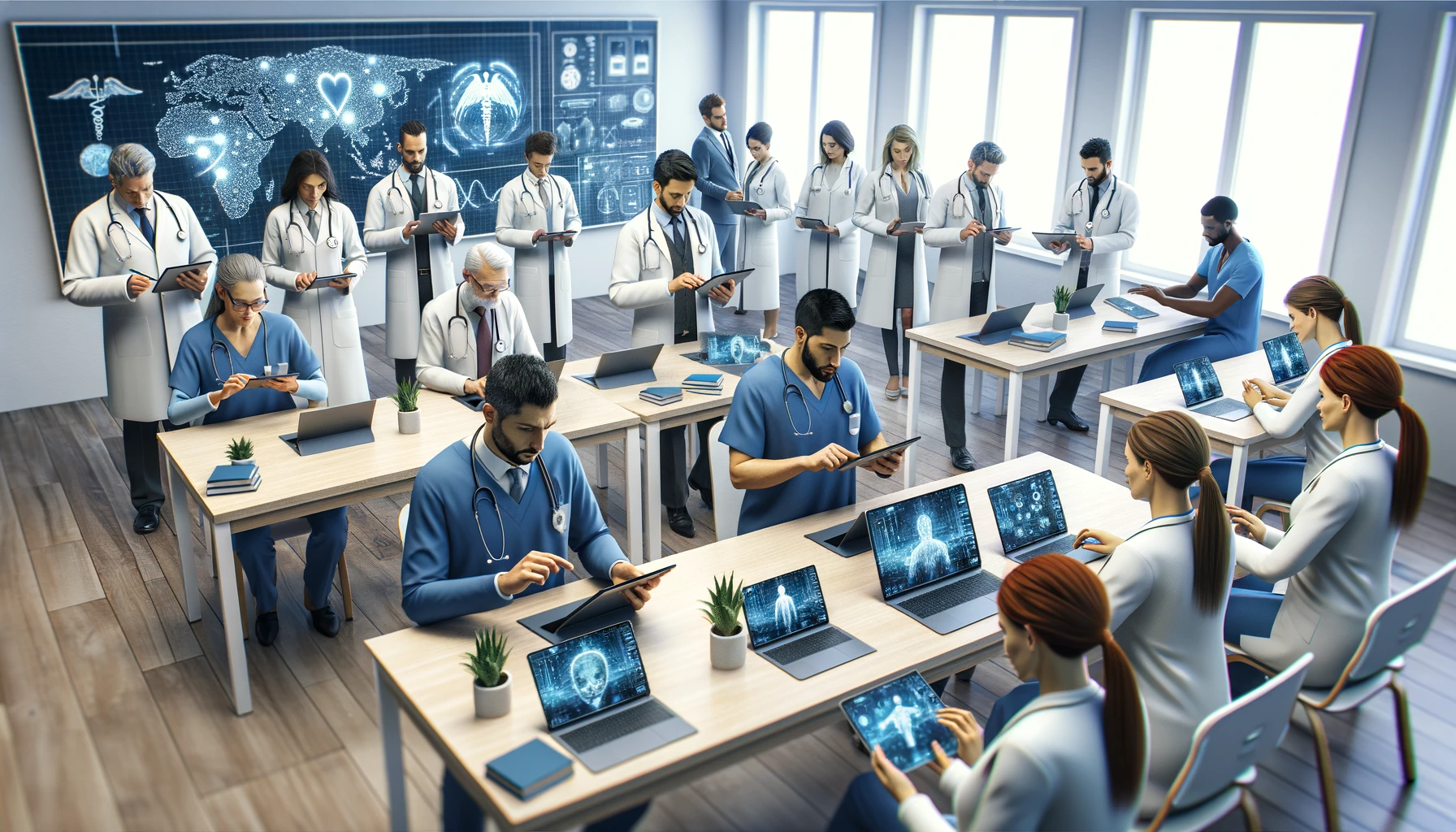
Adaptation to Student Needs
Considering the characteristics of current generations, such as generation Z, digital natives who value quick and multi-format interactions, educators must adapt their pedagogical strategies to effectively engage this new profile of students.
In modern medical education, the adaptation to students’ needs it is fundamental. Today's higher education students, born in the digital era, are digital natives who expect education to be dynamic, interactive and multimodal.
To meet these expectations, educators must incorporate a variety of teaching formats that leverage technology. This includes the use of online learning platforms, multimedia resources, and interactive tools, such as quizzes and simulators, which can transform the educational experience into something more engaging and effective for this audience.
Fast and efficient communication is also valued by these students. Therefore, teaching strategies must include methods that allow instant feedback and constant interaction, whether through online forums, virtual tutoring sessions or educational applications that allow a direct and quick exchange of information.
Furthermore, it is necessary to recognize and value the diversity of learning styles that students bring to the educational environment. Some may prefer visual learning, others auditory or kinesthetic, and educators must be prepared to offer materials that suit these different needs.
Implementing a pedagogy that emphasizes personalized learning and self-learning is another important aspect. This not only facilitates the absorption of content according to students' individual preferences, but also prepares them for the continuous responsibility of updating and lifelong learning, critical in medicine.
Therefore, adapting to the needs of modern students is not just a matter of adopting new technologies, but also of recognizing and responding to changes in learning dynamics. By doing so, educators not only improve teaching effectiveness, but also encourage greater student engagement and satisfaction.
In short, by addressing the specific needs of Gen Z students, educators can create a more inclusive and effective learning environment that prepares future doctors to be adaptable and competent professionals in an ever-changing world.
Deepening our understanding of student needs, the next section explores how a critical and reflective perspective is essential for developing advanced thinking skills. Read on to explore the importance of critical thinking in medical training.

Critical and Reflective Perspective
Critical thinking allows educators to not only consume information but also question, analyze, and apply knowledge effectively. This competency is important for developing healthcare professionals who can make informed, evidence-based decisions in complex clinical environments.
A critical and reflective perspective It is one of the most valued skills in contemporary medical training. Developing critical thinking allows educators and students to not only absorb information, but also question, analyze, and synthesize that data to apply it effectively and responsibly.
This skill is essential, as medicine is a field that often faces complex and ambiguous situations, where quick and informed decisions can have a significant impact on patients' lives. Teaching future doctors to think critically prepares them to make informed, evidence-based decisions, an essential practice in any clinical setting.
Educators can foster a critical perspective by introducing teaching methods that involve case study analysis, ethical debates, and group discussions. These activities encourage students to consider various points of view and develop well-founded arguments, in addition to stimulating curiosity and constant questioning.
Furthermore, reflection is a complementary component to critical thinking. Through reflection, students can review their learning experiences and clinical practices, identify areas for improvement, and consolidate their knowledge. This process not only improves individual learning, but also contributes to ongoing professional development.
Implementing reflection as part of the medical curriculum also helps to produce professionals who are able to learn from mistakes and successes, a fundamental skill for doctors seeking excellence in their practice. Fostering an environment where reflection is a common practice also creates a culture of continuous improvement and conscious care.
Therefore, cultivating a critical and reflective perspective is not just a matter of improving analytical skills; it is a fundamental part of training doctors who are intellectually curious, ethical, and able to adapt and respond effectively to changes in medicine.
In summary, a critical and reflective perspective is indispensable for medical education, equipping future professionals with the necessary tools to face the clinical and ethical challenges of modern medicine. This focus on critical thinking leads us to the next essential topic: leadership in education. Read on to discover how leadership can be cultivated and integrated into the medical curriculum.

Leadership in Education
Leading by example is one of the most effective ways to instill values and practices. Educators who demonstrate strong leadership prepare their students to be future leaders in healthcare.
A leadership in education is fundamental to modeling future leaders in healthcare. Educators who demonstrate strong leadership not only teach, but also inspire their students to adopt practices and values essential to effective leadership. Leading by example is one of the most impactful approaches in this context.
Educators with leadership qualities can significantly influence the professional development of their students, establishing a standard of excellence, ethics and commitment. These education leaders also foster an environment of mutual respect, collaboration and innovation, which are important to the training of any medical professional.
Furthermore, leadership in the educational context involves the ability to motivate and engage students, encouraging them to constantly excel. This includes fostering research, innovation and critical thinking, preparing students to be not only consumers of knowledge, but also generators of change.
Medical training programs should therefore include modules that develop leadership skills such as team management, effective communication, ethical decision-making and conflict management. These skills are essential for doctors who aspire to leadership positions in their fields.
Leadership in education also extends to the ability of educators to adapt curricula and teaching methods to meet the emerging needs of students and clinical environments. This flexibility is a leadership trait that shows students how to innovate and adapt in their own careers.
Therefore, leadership in education is not just about directing or commanding, but about cultivating a culture of excellence, ethics and cooperation. Educators who lead by example are key players in developing future generations of medical leaders capable of facing the challenges and complexities of contemporary healthcare.
In short, leadership is an essential element in medical education, central to the training of qualified professionals ready to lead with integrity and innovation. The discussion of leadership leads us to the next section: continuous development. Stay with us to explore the importance of continuous learning in a medical career.

Continuous Development
Medical education does not end with graduation; it is an ongoing process. Encouraging educators to seek constant improvement is essential to maintain the relevance and effectiveness of teaching.
O continuous development is a pillar of medical education, recognizing that learning and professional improvement do not end with graduation. For medical educators, the pursuit of new knowledge and skills is essential to maintaining the relevance and effectiveness of their teaching in a field that is always evolving.
Encouraging this practice not only helps keep educators up to date with the latest medical practices and discoveries, but also serves as an inspiring model for students, showing them the importance of continuous learning in their own medical careers.
Professional development programs, workshops, conferences and specialization courses are valuable resources that educators can use to enrich their skills and knowledge. This continuous education is important not only for technical updating, but also for expanding pedagogical and leadership skills.
Furthermore, participation in professional and academic networks can provide enriching exchanges and collaboration opportunities, expanding educators' vision of pedagogical innovations and trends in global health.
Therefore, continuous development must be seen as an intrinsic component of the teaching career in medicine. By committing to constant improvement, educators not only improve their own skills, but also contribute significantly to raising the standards of medical teaching and practice.
Therefore, promoting a culture of continuous development within medical teaching institutions is necessary to ensure that both teachers and students are always ahead of challenges and changes in medicine. This commitment to continuous improvement is what distinguishes the best professionals and institutions in the healthcare field.
In conclusion, continuous development is essential to the constant evolution of medical education, ensuring that both educators and future physicians can remain efficient, relevant, and able to lead with excellence in today's dynamic and challenging healthcare landscape. Advancing the discussion on continuous development prepares us for the conclusion of this article, where we will summarize the concepts discussed and reinforce the importance of integrating these skills into everyday academic and professional life.
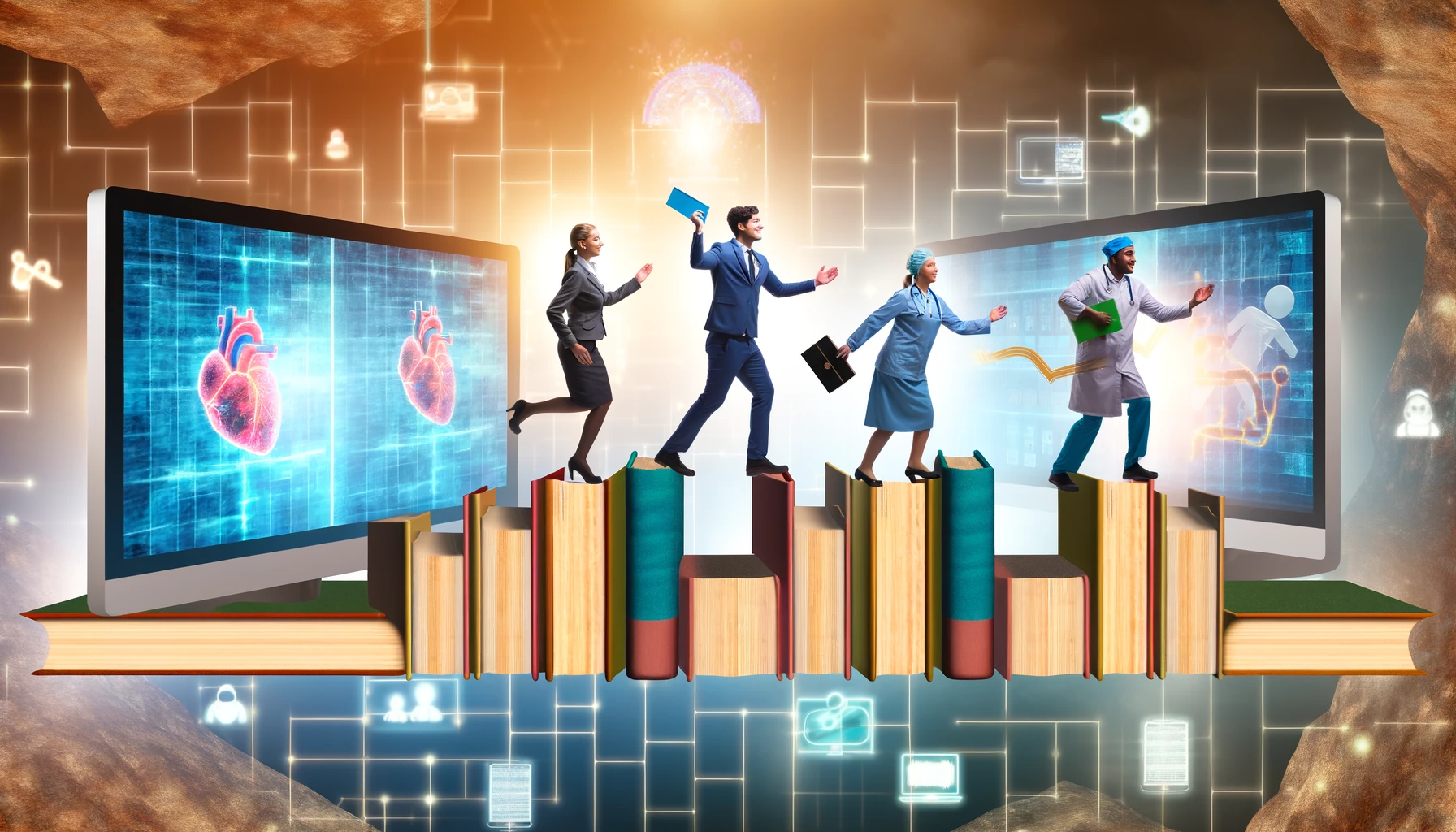
Conclusion
Developing 21st century skills is important for medical educators, not only for their self-efficacy, but also to ensure that medical education is aligned with the expectations and needs of modern society. We encourage readers to reflect on how these competencies can be integrated into their teaching practices to transform medical education.
When we explore the 21st century skills For medical educators, the need for an educational approach that is both innovative and adaptive is evident. The skills discussed throughout this article are not only essential for meeting the challenges of the future, but also for ensuring that medical education remains relevant and effective in preparing qualified professionals.
A digital literacy, for example, is indispensable in the modern world, where technology plays a role in almost every aspect of medical practice. Medical educators must be able to efficiently integrate new technologies to enrich learning and improve educational outcomes.
Likewise, the ability to implement active teaching-learning methodologies places the student at the center of the educational process, a necessary change to adequately engage and prepare the doctors of the future. These methodologies encourage critical thinking, problem solving and deeper, more retentive learning.
Furthermore, the interpersonal and communication skills are essential. The ability to communicate effectively not only improves educator-student interactions, but also prepares future physicians for more effective interactions with their patients and co-workers.
A interdisciplinary collaboration is another element that cannot be overlooked, reflecting the integrated nature of current medical practice. Promoting a learning environment where this collaboration is practiced prepares students for multidisciplinary teamwork essential in patient care.
A adaptability and flexibility These are qualities that any doctor should possess, given the rapid pace of change in medicine. Educators who exemplify these qualities can inspire their students to also be adaptable, a critical skill in their future medical careers.
Finally, the continuous development is a recurring and essential theme. Learning does not end with graduation; It is a process of improvement and adaptation, both for educators and students. Promoting a culture of continuous learning is necessary to maintain excellence in medical education.
Share your experiences and ideas with us about how these 21st century skills can best be implemented in your area of expertise.
In conclusion, each of these competencies contributes significantly to the improvement of medical education, ensuring that it is aligned with the needs of modern society. We encourage each reader to reflect on how these skills can be integrated into their own pedagogical practices to transform not only themselves, but the entire fabric of medical education.
Together, we can inspire positive change in medical education, shaping future healthcare professionals who are more prepared and connected to the needs of the 21st Century.
Share now and be part of this transformation!
Common questions
Teacher training, especially in the context of 21st Century Skills, is a process that integrates both theoretical knowledge and practical skills essential for effective teaching. This training is designed to equip future educators with innovative teaching methods, preparing them to face the educational challenges of a rapidly evolving world. The emphasis is on developing skills such as digital literacy, critical thinking and adaptability, essential for contemporary education.
In the context of medical education, teacher training covers even more specificities, such as the development of clinical skills and the ability to transmit these skills in an effective and empathetic way. Faculty training programs at medical schools often include modules on active pedagogical approaches, the use of technology in education, and strategies for improving interaction with students. These programs, along with specialized training, such as the Instituto Educater are essential to preparing educators who can provide a rich learning experience adapted to the needs of contemporary students.
Furthermore, ongoing training is a fundamental aspect of the teaching career, requiring educators to remain up to date with the latest educational trends and discoveries in their field. This is particularly important in rapidly evolving fields such as medicine, where new technologies and treatments are constantly shaping the educational and clinical landscape.
For more information about university education in the 21st century, visit the article Challenges to reinventing the training of university teachers for the 21st century.
One teaching doctor is a healthcare professional who combines clinical activities with educational responsibilities. This role is essential in medical teaching institutions, where these doctors are essential for training and mentoring the next generation of professionals. The role of a teaching physician goes beyond traditional teaching; it involves supervising interns and residents in clinical settings, conducting research, and frequently attending conferences and workshops to update your skills and knowledge.
The teaching doctor, also known as preceptor, must possess not only in-depth knowledge in their medical specialty, but also pedagogical skills to transmit this knowledge effectively. This includes the ability to adapt teaching methods to emerging technologies and changes in healthcare practices, ensuring that teaching is aligned with current standards of medical care and technological innovations.
Furthermore, it is essential that teaching doctors develop interpersonal and communication skills, as this facilitates interaction with students and other health professionals, creating a collaborative learning environment and mutual support. This combination of clinical and educational skills makes teaching doctors key players in the advancement of medicine and the training of qualified human resources for the healthcare sector.
Get to know the academic training of a doctor It is essential to assess your qualifications and expertise. A doctor's education is generally public and can be verified through several reliable sources. One of the most direct ways is to consult the website of the regional or national medical council, where all doctors qualified to practice medicine in the country are registered. These records often include details about medical degrees, specializations, and certifications.
Another option is to visit the website of the medical institution where the professional works. Many hospitals and clinics list the profile of their doctors, including their academic qualifications and areas of specialization. Additionally, healthcare professional review platforms and professional social networks such as LinkedIn can also offer information about doctors' education and academic careers.
To ensure the accuracy of information, it is recommended to check sources in more than one place, especially on official and recognized platforms in the health area, such as curriculum lattes. By better understanding a doctor's academic background, patients and colleagues can establish a stronger relationship of trust and professional respect.
You levels of teacher training vary significantly depending on the educational system and area of specialization. Generally, training begins with an undergraduate course in Medicine or a specific health field, followed by certifications at the specialization or residency level that train the professional technically. Unfortunately, in Brazil, pedagogical training is not mandatory to teach medical courses.
After graduation, many educators choose to pursue postgraduate studies, such as master's degrees and doctorates, which offer more in-depth and specialized training. These advanced levels of training allow teachers to develop research skills, advanced educational theories and innovative teaching methods. Furthermore, they contribute to the training of university professors and researchers. Again, at this level pedagogical training generally falls short of what is necessary, as the main focus is on research for the degree.
Additionally, there are ongoing training and professional development courses, essential for educators to stay up to date with new pedagogical practices and educational technologies. These courses can be offered by higher education institutions, professional associations, government bodies and institutions specializing in teacher training, such as the Instituto Educater, and are an important part of any educator’s career development.
Being a professor of Medicine requires a combination of advanced academic training, clinical experience and pedagogical skills. Firstly, it is necessary to have a degree in Medicine, followed by a medical residency in the chosen specialty. The solid academic foundation allows the doctor to acquire the essential clinical and practical knowledge to teach future doctors.
In addition to medical training, aspiring medical teachers often complete courses or master's degrees in medical-related fields. Some of these programs focus on teaching methods, educational assessment and curriculum planning, which are decisive for the training of an effective educator.
Hands-on experience in the medical field is equally important as it provides educators with the ability to impart knowledge based on real patient care situations. Furthermore, interpersonal and communication skills are essential to facilitate learning and adequately guide students. Participation in conferences, seminars and research activities also contributes to the teacher's competence and prestige in the academic and medical field.
For more details on how to become a medical teacher trained to work in the 21st Century and the most relevant qualifications, visit our specialization course information here.
A teacher training it must be comprehensive, combining theoretical knowledge with practical skills. It begins with a degree in the chosen teaching field, where future teachers acquire basic knowledge about teaching methods, curriculum development and classroom management. This provides a solid foundation for understanding the fundamental principles of education.
Then, a graduate degree in education or a teaching certificate program helps hone the skills needed for effective teaching. These programs focus on pedagogy, educational psychology, educational assessment, and specializations in specific teaching methods. Supervised internship is also an important part of this stage, providing practical experience in real classroom environments.
Continuous development is equally essential, with teachers attending training courses throughout their career to keep their skills up to date. Workshops, seminars and conferences can offer insights into new educational technologies, innovative teaching methodologies and best practices in education.
A training required to be a medical teacher It begins with obtaining a medical degree, followed by a residency in the specialty in which you intend to teach. Successful completion of residency ensures that the physician has acquired the essential clinical skills and practical experience necessary to teach and supervise medical students.
Additionally, many aspiring medical teachers choose to pursue a master's or doctorate in medical education or a related field. These programs provide training in pedagogy, curriculum development, assessment techniques, and teaching skills, which are important for effectively imparting knowledge to students. Specific research methodology courses are also valuable, as many medical professors combine their teaching activities with scientific research.
Finally, significant and ongoing clinical experience is necessary for a medical professor, as regular practice keeps skills current and provides real cases and experiences that can be integrated into teaching. Interpersonal, leadership and communication skills are equally important in guiding and inspiring students.
To the skills that 21st century professionals need to have They are diverse and reflect ongoing technological and social changes. Firstly, digital literacy is essential, as technology permeates every aspect of modern work. Professionals must be able to navigate a digitized environment with ease and efficiency.
Additionally, communication and collaboration skills are essential. Interdisciplinary teamwork and effective communication are important in a globalized world, where projects often involve collaborators from different cultures and time zones. Critical thinking and problem solving are also essential skills, allowing professionals to analyze complex situations and develop innovative solutions.
Adaptability and continuous learning complete the necessary skill set, as the accelerated pace of change requires professionals to always be learning and adjusting to new contexts and technologies. These skills are fundamental for anyone who wants to not only survive, but thrive in the 21st century economy.
To the skills and competencies that the 21st century teacher must have include a combination of pedagogical knowledge, technological mastery and social skills. Digital literacy is critical as teachers need to incorporate technology tools into the curriculum to create engaging and relevant learning experiences.
Furthermore, communication and empathy skills are essential for building an inclusive and collaborative learning environment. Teachers who can communicate effectively, both in person and virtually, are able to capture students' attention and promote meaningful interaction. Interdisciplinary collaboration and the ability to adapt to diverse student needs are equally important in responding to the diverse educational landscape.
Other important skills include critical thinking and creativity, which allow teachers to develop innovative teaching strategies and solve complex problems in the classroom environment. Finally, continuous learning and the ability to integrate new teaching methodologies and practices are critical to long-term success.
To the skills that a doctor should have include a combination of clinical skills, theoretical knowledge and interpersonal qualities. First, a doctor needs a solid foundation in medical knowledge that allows them to diagnose and treat health conditions effectively and safely using evidence-based practices.
In addition to technical skills, communication skills are essential for doctors to establish a trusting relationship with patients, understand their concerns and explain diagnoses and treatments clearly. Empathy is equally important to create a humanized care environment.
Other fundamental skills include critical thinking and problem solving, which enable the doctor to evaluate complex situations and make informed decisions quickly. Interdisciplinary collaboration is also essential to work with other healthcare professionals and provide integrated patient care.
To the skills and competencies that the medical educator must develop are a combination of technical knowledge, pedagogical skills and interpersonal qualities. A medical educator needs to have a solid understanding of medical principles and evidence-based best practices to convey this information clearly and effectively to students.
Additionally, pedagogical skills are essential for creating an engaging and effective learning environment. This includes the ability to use active teaching methodologies such as problem-based learning and incorporate educational technologies for clinical simulations and distance learning.
Interpersonal qualities, such as effective communication and empathy, are fundamental to guiding students in their professional and personal development. A medical educator must be able to provide constructive feedback, build strong relationships, and inspire their students to strive for excellence in their future careers.
A importance of professional education for the 21st century It is fundamental in an increasingly dynamic and technological world. This form of education prepares individuals to face the challenges of the contemporary job market, providing them not only with technical knowledge, but also essential skills such as critical thinking, problem solving, and adaptability.
Professional education in the 21st century also emphasizes the importance of continuous learning and lifelong skill development. As industries evolve and new technologies emerge, the ability to continue learning and adapting is important for maintaining employability and professional success.
Furthermore, this form of education promotes a practical approach that is often driven by specific market demands, making learners immediately ready to contribute effectively in their chosen fields. This focus on practical applicability is essential to bridging the gap between educational theory and actual workplace needs.
O 21st century educator must be a multifaceted learning facilitator, prepared to face an ever-changing educational environment. He must be highly qualified in digital technologies, using interactive tools and e-learning platforms to enrich the teaching process and make it more accessible.
In addition to being technologically skilled, the modern educator needs to develop social and emotional skills to effectively support student development. This includes skills such as empathy, communication and flexibility to adapt teaching strategies to individual students' needs.
The 21st century educator must value and practice continuous learning and professional development, keeping up to date with the latest research and pedagogical practices. The ability to critically and creatively integrate new information and adapt to developments in the educational field is essential to leading and inspiring a new generation of learners.
O profile of the 21st century teacher is defined by an innovative and adaptive approach to teaching that goes beyond traditional pedagogical practices. This professional must master digital tools and educational technologies to create engaging and interactive learning experiences, using online platforms, educational videos and simulations to complement theoretical content.
Furthermore, today's teacher needs to be a facilitator who places students at the center of the learning process, encouraging critical thinking, creativity and collaboration. The ability to communicate empathetically and provide constructive feedback is essential to guiding students toward their educational and career goals.
Another important aspect is the search for continuous learning. 21st century teachers must stay up to date with the latest educational trends and teaching practices by attending workshops, seminars, and courses to refine their teaching skills.
One of characteristics necessary for the 21st century teacher is digital literacy. In this context, educators need to master digital tools to integrate innovative technologies into their pedagogical practices, making classes more engaging and interactive. Online platforms, learning applications and multimedia are examples of resources that can significantly improve the teaching process.
This competence is fundamental to creating a relevant and attractive learning environment for students, who are increasingly digital natives. Digital literacy also allows teachers to personalize their teaching for different learning styles, using interactive quizzes, online simulations and other digital methods.
Furthermore, this ability allows teachers to lead their classes in hybrid or fully remote environments, which has become essential in times of change in traditional forms of education. Digitally literate teachers are better able to navigate the world of e-learning, ensuring their students receive a high-quality education regardless of location.
Be a educator today is to embrace a multifaceted role that goes beyond the simple transfer or transmission of knowledge. Today's educator must be a learning facilitator, capable of inspiring and guiding students in a constantly changing environment. This requires it to integrate digital tools and innovative methodologies to make learning more engaging and adapted to the individual needs of each student.
Furthermore, being an educator today requires strong communication and empathy skills. The ability to build strong relationships and provide constructive feedback helps create an inclusive and collaborative learning environment. The educator must also stay up to date with the latest educational trends by attending workshops, conferences and courses to refine their skills.
Finally, continuous learning is key. Educators need to be willing to evolve and adapt their techniques to offer the best possible experience to their students, encouraging them to think critically, solve problems creatively and collaborate effectively.
One education suitable for the 21st century is characterized by its adaptability, relevance and focus on core competencies. Education must prepare students for an ever-changing world, promoting skills such as critical thinking, problem solving, creativity and digital literacy. The curriculum needs to be flexible to incorporate emerging technologies and new teaching methodologies that meet the needs of a digitally connected generation.
Personalization of teaching is another important factor. 21st century education must be able to adjust to different learning styles and individual interests, offering personalized paths for each student to reach their full potential. This may include the use of online platforms, multimedia resources and interactive activities, as well as constant feedback.
Furthermore, interdisciplinary collaboration and global citizenship are essential components. Students must learn to work effectively in diverse teams and develop an understanding of global challenges. Education should encourage a spirit of citizenship, ethics and social responsibility, preparing them to contribute positively to society.
Your message is important to us
Important
This is an open invitation to educators, students and healthcare professionals to engage in this educational transformation. Your participation, whether sharing experiences, ideas or challenges, is crucial to shaping the future of medical education. We are at an inflection point: together, we can lead the change toward medical education that truly meets society's needs. Are you ready to be part of this evolution?
